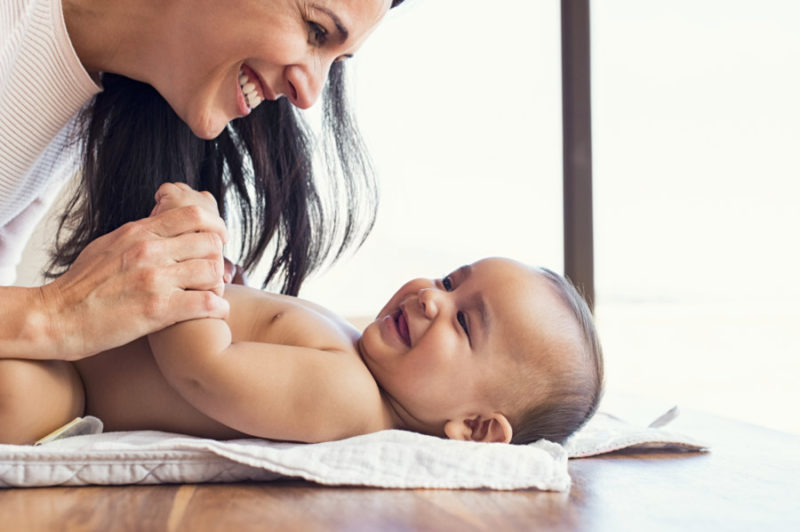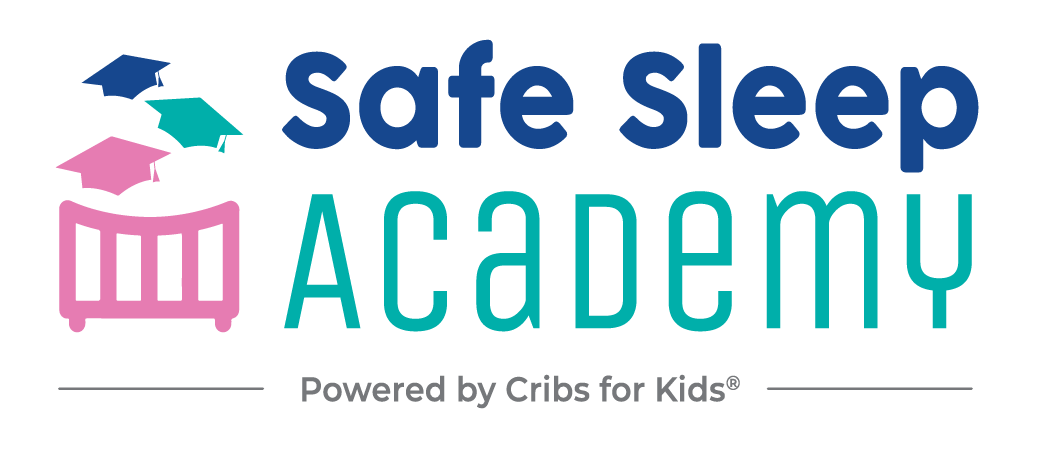During this stage of infancy, your baby is dependent on you to meet his/her needs. They are learning through their developing senses and our interactions with them how their needs get met. Our responsiveness to their cues is their first experience with serve and return interactions. (Serve and return = initiation of interaction by one person and response to initiation by another). These interactions play an important part in developing brain connections in infants and children and support communication and social skills. Babies at this stage are learning self-regulation skills through sleeping/eating routines we are helping set. Over these first four months, your child will meet lots of smaller milestones that will be the basis of developing the bigger milestones in the developmental stages to come.
Here are some milestones you will see in the first few months
Eyesight Development – During these first few months, your baby’s eyesight is developing. Babies focus best on items 8-12 inches away.
Initially, they will see in black and white but will be able to notice most colors by 3 months of age. Babies notice red first!
Babies will begin by focusing on faces for increasing periods of time and will soon be able to recognize familiar faces and voices.
Additionally, your baby will begin to follow objects with their eyes

Baby’s First Smile – During this time you will see your baby’s first real smile.
Reaction to Sounds – Your baby will begin to respond to sounds in different ways (startle, quiet too) and will begin to turn head towards the sources of sound.
Making Sounds – Your baby will begin to coo and make noises.
Head Control – Your baby will learn to hold their head up when held and lift their head during tummy time.
Communication – Your baby will begin to develop different cries for different needs (i.e. Hungry/tired/bored).
Grip – hold onto your finger and then advancing to objects placed in fist
Interacting with Objects – Your baby will begin to swipe towards objects they are interested in.
Rolling -Your baby will begin to roll over in both directions.
Facial Expressions – Your baby will begin to imitate some of your facial expressions.
Activities to Encourage Development
- Give your baby eye contact and talk to your baby. Do this at any time of day! Feedings and diaper changes are great opportunities since you’re facing each other. Imitate your baby’s sounds and expressions. When you do this, you are modeling the back-and-forth interactions essential for communication.
- Play with your baby in the mirror. Let them look at themselves and you!
- Offer your baby different textures. Basic household items such as scarves, ribbon, sponges, stuffed animals, cardboard egg cartons are some examples of things you can try. Help touch your baby’s hand over them.
- Get your baby moving with movement activities to help them become aware of their body. Stretch arms and legs, pretend to help your baby pedal a bike, play airplane by moving them overhead.
- Tummy time can be done on the bed, floor, or your chest. If your baby is having a hard time lifting their head, roll a small blanket or towel and place it under their chest and arms. Lay in front of your baby so that they can look at you.
- Use high contrast pictures or toys. Black and white pictures can be printed right from the internet. Keyword search Black and white printouts for Babies. Place them around your home.
- Buy helium-filled foil balloons and loosely attach them to your baby’s ankles or tuck ribbon in bag socks. The Balloons will move as your child moves their feet.
- Help your baby track objects by starting at the midpoint in front of their face and then tracing different directions. If your baby loses track of the object, move the object back to where they are looking and start again.

Each child is different and will develop at their own pace. These milestones are a guide to when children meet these milestones on average. If you are concerned that your child is not meeting these milestones in a timely fashion, contact your pediatrician to talk about your child and their individualized needs.

